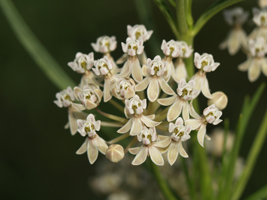Asclepias subverticillata
Photo Credit: © Carlos Velazco via iNaturalist.org. License: Creative Commons Attribution-NonCommercial 3.0 Unported License (http://creativecommons.org/licenses/by-nc/3.0/)
Asclepias subverticillata
Common Name: horsetail milkweed
Other Common Names: bedstraw milkweed, poison milkweed, western whorled milkweed, whorled milkweed
Plant Functional Group: Forb
Class > Order > Family: Magnoliopsida > Gentianales > Apocynaceae
